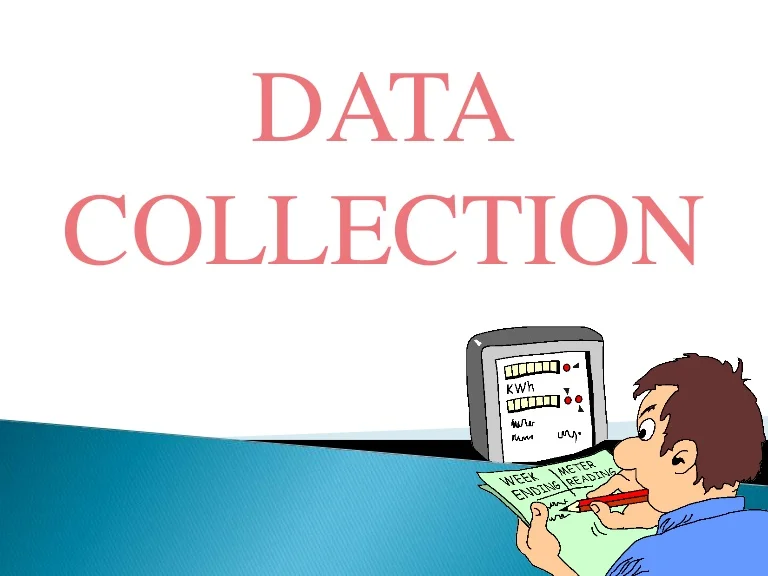Understanding Data Subject Access Requests
What are Data Subject Access Requests?
Data Subject Access Requests (DSARs) are formal requests made by individuals to access their personal data that is being processed or held by an organization. This right is enshrined in the General Data Protection Regulation (GDPR) and other relevant data protection laws around the world, including the UK’s Data Protection Act 2018.
DSARs allow individuals to know what personal data an organization holds about them, where it came from, and how it is being used. It also enables them to correct any inaccuracies in their data or have it deleted if they so choose. This process is often referred to as the “right to access” or the “right to data subject access”.
The personal data that can be requested under a DSAR typically includes, but is not limited to
- Name and contact details
- Date of birth and age
- Address and location information
- Employment history or education records
- Credit or financial information
- Health data or medical conditions
- Browsing history and online behavior
The purpose of a DSAR is to inform the individual about how their personal data has been used, disclosed, and protected by an organization. It’s a critical tool for individuals to exercise control over their own data and ensure that organizations are handling it responsibly.
Under GDPR, organizations have one month to comply with a DSAR once received. Failure to do so can result in fines or other penalties. The process involves the individual submitting a formal request to the organization, which then undertakes a thorough search of all relevant systems and data sources to gather and compile the information requested.
The response must be provided in a clear and concise manner, making it easy for the individual to understand what is being communicated. It’s essential that organizations provide accurate and comprehensive information to demonstrate compliance with GDPR requirements.
Data protection regulations emphasize transparency, accountability, and control for individuals over their personal data. Data Subject Access Requests are an integral part of this framework, enabling individuals to exercise their rights and hold organizations accountable for how they manage and process their personal data.
A Data Subject Access Request (DSAR) is a formal request made by an individual to access their personal data held by an organization.
A Data Subject Access Request (DSAR) is a fundamental right granted to individuals under the General Data Protection Regulation (GDPR), allowing them to access and obtain information about their personal data held by organizations. This request serves as a crucial mechanism for enabling transparency, accountability, and control over one’s personal data.
The process of submitting a DSAR typically begins when an individual decides to exercise their right to access their personal data. They can do this by contacting the organization directly, usually through a designated contact or department responsible for handling such requests. The request should be made in writing and clearly specify the individual’s intention to exercise their DSAR rights.
Upon receipt of the request, the organization must act promptly and efficiently. Under GDPR regulations, organizations have a maximum of one month to respond to a valid DSAR from the day they receive it. This timeframe can be extended by two additional months if the requests are complex or numerous, but any extension requires clear justification and notification to the data subject.
When processing a DSAR, the organization must provide the individual with access to their personal data, including the following information
Confirmation that the data has been processed
The organization must confirm whether it holds or has ever held any of the individual’s personal data and how this data is being used.
Categories of personal data involved
The organization should specify what categories of personal data are being processed, including the types of sensitive information if applicable.
Sources of the data
Organizations must inform the data subject about where they obtained their personal data from, unless this would involve disclosing personal data about a third party.
Third-party recipients of data
The organization should provide details on who their personal data has been shared with and why it was shared with these entities.
Storage periods for the data
Organizations must specify how long they intend to keep or have kept the individual’s personal data, including any archiving processes.
Right to rectification
The organization should inform the data subject about their right to request correction or rectification of inaccuracies within their personal data.
Right to erasure
Organizations must also notify the data subject about their right to request erasure (or deletion) of their personal data, if applicable, under specific circumstances.
Right to restrict processing
The organization should inform the individual about their ability to request restriction on further processing of their data in certain situations.
Right to data portability
If relevant, organizations must provide details on how the data subject can obtain a copy of their personal data in a structured and machine-readable format for transfer to another organization.
Contact details for complaints
Finally, organizations should specify the contact details through which individuals can lodge any complaints or appeals against the handling of their DSAR request.
The Data Subject Access Request is a powerful tool that empowers individuals with control over their personal data. By understanding this right and how to exercise it effectively, both organizations and individuals can navigate the complex landscape of data privacy laws more confidently and responsibly.
Kinds of Personal Data Covered
The General Data Protection Regulation (GDPR) defines personal data as any information that relates to an identifiable natural person. This can include a wide range of information, such as
Identity Information
Name, date of birth, address, email address, and telephone number.
Contact Details
Employment details, education history, and employment status.
Sensitive Personal Data
Health records, genetic data, biometric data, racial or ethnic origin, political opinions, religious beliefs, trade union membership, and sex life or sexual orientation.
Online Identifiers
Cookies, IP addresses, and device information that can be used to identify an individual.
Payment Information
Bank account details, credit card numbers, and other financial data.
The GDPR also covers Data of Special Categories, which includes personal data revealing racial or ethnic origin, political opinions, religious or philosophical beliefs, trade union membership, genetic data, biometric data for the purpose of uniquely identifying a natural person, health-related data, or data concerning a natural person’s sex life or sexual orientation.
A Data Subject Access Request is a formal request made by an individual to access personal data that an organization holds about them. This right to access personal data is enshrined in Article 15 of the GDPR and allows individuals to
Obtain confirmation from the controller as to whether or not personal data concerning them is being processed;
Request access to any personal data held by the controller and to have such information transmitted to another party in a structured, commonly used format;
Receive information about the purposes of the processing, categories of data concerned, recipients, if applicable, retention period, right to erasure and rectification, and right to lodge a complaint with the relevant authority.
In summary, the kinds of personal data covered in a Data Subject Access Request under GDPR are diverse and extensive, including identity information, contact details, sensitive personal data, online identifiers, payment information, and data of special categories.
The following types of personal data are typically covered under a DSAR
The General Data Protection Regulation (GDPR) and other relevant laws give individuals the right to access their personal data that is being held or processed by an organization. This right is often referred to as a “Data Subject Access Request” or DSAR.
DSARs allow individuals to understand what personal data about them is being collected, stored, or otherwise processed by an organization and for what purposes. It’s essential for organizations to be transparent about how they handle individual’s personal information and provide access to this data in a clear and accessible manner when requested.
The following types of personal data are typically covered under a DSAR
Contact Information
This includes names, email addresses, phone numbers, postal addresses, and other contact details.
Identifying Information
This encompasses unique identifiers such as social security or tax identification numbers, driver’s license or passport numbers, and other personal identifying information.
Browsing and Search History
DSARs can include requests for data related to an individual’s online activities within the organization’s systems or platforms, including search history and browsing habits.
Purchase History and Financial Information
This type of personal data includes details about financial transactions conducted by the individual through the organization’s services or websites.
Sensitive Data
This category includes personal information that could be considered sensitive, such as health data, sexual orientation, gender identity, racial or ethnic origin, and political opinions.
Data from Public Sources
If the organization has collected personal data about an individual from public sources (like social media profiles), it also falls under the DSAR.
Cookies and Tracking Data
This includes information stored in cookies, browsing sessions, or any other mechanism used to track user interactions with the website or application.
Predictive Analytics and Behavioral Data
Some organizations collect data on an individual’s behavior within their systems or through external sources to apply predictive analytics models, which might be covered under a DSAR.
Organizations must provide individuals with access to the categories of personal data that it collects, processes, or holds when they submit a valid DSAR. This information should be provided in a clear and understandable format within one month as per GDPR guidelines or other local regulations that may apply.
Contact information
According to Article 12 of the General Data Protection Regulation (GDPR), data subjects have the right to access their personal data and request corrections or erasure. This is known as a “Data Subject Access Request” (DSAR). To facilitate this process, organizations must provide contact information for DSARs in clear and transparent language.
This contact information should include the name and title of the person responsible for handling DSARs, as well as their email address, postal address, and phone number. It is recommended that organizations also provide a specific email address or form for submitting DSARs to ensure efficient processing and minimize delays.
In addition to providing contact information, organizations must clearly outline the process for submitting and responding to DSARs. This should include details on what information is required to initiate the request, how long it will take to respond, and what rights data subjects have under the GDPR.
The contact information for DSARs should be easily accessible and available throughout an organization’s systems, including its website, terms of service, and marketing materials. This ensures that individuals can quickly locate and submit a DSAR if they wish to exercise their rights under the GDPR.
Organizations must also ensure that their DSAR process is compliant with Article 12(3) of the GDPR, which requires data controllers to provide information on their policies regarding profiling and automated decision-making. This may include details on how data subjects can access, correct, or delete their personal data in relation to these activities.
It’s also essential for organizations to have procedures in place to verify the identity of data subjects making DSAR requests, as required by Article 12(6) of the GDPR. This ensures that sensitive information is only disclosed to authorized individuals and protects against potential misuse.
In summary, providing clear and accessible contact information for Data Subject Access Requests is a critical aspect of compliance with the GDPR’s transparency requirements. By doing so, organizations demonstrate their commitment to respecting individuals’ rights and enable them to exercise control over their personal data.
Financial information
The General Data Protection Regulation (GDPR) introduces new rights for individuals regarding their personal data, including the right to access their financial information. A Data Subject Access Request (DSAR) is a formal request made by an individual to gain insight into how their data has been processed, stored, and shared.
Under GDPR, businesses are required to respond to DSARs within one month of receipt. This means that companies must be prepared to provide detailed information about the financial data they hold on individuals, including
– The type of data collected and how it was obtained;
– How the data is stored and processed;
– Who has access to the data;
– Whether any third-party companies have been involved in processing or storing the data;
– A copy of the individual’s personal data, in a commonly used digital format;
– Any relevant documentation related to the data processing activities.
Businesses must also be prepared to explain how they use and protect the financial data, including their policies for safeguarding sensitive information. This could include details about encryption methods, access controls, and employee training programs.
Respondents will need to provide clear, concise language in a format that’s easy to understand. Where technical or complex terms are used, a brief explanation should be provided. The document may also need to be translated into other languages if the business operates internationally.
The requested information must be accurate and up-to-date, reflecting any changes made since the last update. Providing incorrect or incomplete information could lead to regulatory consequences.
Health records
The General Data Protection Regulation (GDPR) provides individuals with certain rights regarding their personal data, including the right to access and obtain copies of their health records. A Data Subject Access Request (DSAR) is a formal request made by an individual to access or correct their personal data held by an organization. In the context of health records, DSARs are crucial for enabling individuals to understand what information is being collected about them, how it is being used, and with whom it is being shared.
Health records typically include sensitive personal data such as medical history, diagnoses, treatments, test results, and correspondence between healthcare professionals. These records can be held in various formats, including paper-based files, electronic health records (EHRs), and digital documents stored on cloud-based services. When responding to a DSAR for health records, organizations must comply with specific requirements set out in the GDPR.
The key steps involved in responding to a DSAR for health records are
Verify the request
Organizations should verify that the individual making the request is entitled to access their health data under the GDPR. This can be done by checking the individual’s identification and confirming their consent.
Determine the scope of the request
The organization must clearly understand what information the individual is requesting, including any specific records or categories of data they are seeking to access.
Search for relevant records
The organization should conduct a thorough search of their records systems to locate all relevant health data associated with the individual making the request.
Provide the requested information
The organization must provide the individual with access to the identified health records in an easily accessible format, typically within 30 days from receipt of the DSAR. In cases where the information is particularly complex or voluminous, the timeframe for response can be extended by up to two months.
Copies and summaries
If the individual requests copies of their health records, these should be provided promptly in an electronic format, unless the request specifies otherwise. In some cases, a summary of the information may be acceptable if it is impractical or excessive to provide full copies.
Addressing complaints
If any issues arise during the handling of a DSAR for health records, individuals have the right to lodge a complaint with their local data protection authority (DPA). The DPA will investigate and resolve disputes over the processing of personal data in accordance with the GDPR.
In summary, responding to Data Subject Access Requests for health records is an important aspect of ensuring individuals’ rights under the GDPR. Organizations must be meticulous in handling these requests, providing clear communication and respecting individuals’ right to access their personal information.
Locationbased data
The General Data Protection Regulation (GDPR) mandates that individuals have the right to access their personal data held by organizations, also known as a Data Subject Access Request (DSAR). This right applies to both EU citizens and residents, regardless of where they are in the world. When it comes to location-based data, DSARs can be particularly complex due to the nature of geolocation information.
In this context, location-based data refers to any information that is collected or generated about an individual’s physical whereabouts, including their IP address, device identifiers, and Wi-Fi signals. This type of data is often used for marketing purposes, such as targeted advertising, but it can also be used for more nefarious activities, like stalking.
When a DSAR is submitted to an organization that holds location-based data on an individual, the organization must respond within one month. During this time, they are required to verify the identity of the requester and provide them with access to their personal information. This may involve disclosing various types of data, including
Geolocation data
Any information about the individual’s physical location, such as their latitude and longitude coordinates or a specific address.
Device identifiers
Information that can be used to identify an individual’s device, such as its IP address, MAC address, or other unique identifier.
Activity data
Details about the individual’s online activities, including their browsing history, search queries, and interactions with web pages or applications.
To facilitate the DSAR process, organizations must ensure that they have adequate measures in place to collect, store, and manage location-based data. This includes implementing
Data mapping
A process for identifying and documenting where an individual’s personal data is stored within an organization.
Data classification
A system for categorizing personal data based on its sensitivity or risk level, with location-based data being considered particularly sensitive due to its potential for misuse.
Access control
Measures to ensure that only authorized personnel can access an individual’s location-based data, and that they do so in accordance with their legitimate interests and the organization’s policies.
Data erasure
A procedure for deleting an individual’s personal data when it is no longer necessary or relevant to its original purpose. This may involve using data anonymization techniques to remove any personally identifiable information from location-based data sets.
When responding to a DSAR, organizations must also consider the following best practices
Transparency
Clearly explain how an individual’s location-based data was collected and is being used or shared. Provide information about the organization’s policies and procedures for managing such data.
Accountability
Take responsibility for ensuring that personal data, including location-based information, is handled in accordance with the GDPR and any other applicable laws and regulations.
Safety
Implement measures to prevent unauthorized access or misuse of location-based data, such as encryption, secure data storage, and regular security audits.
Request Process
Making a Request
A Data Subject Access Request (DSAR) is a formal request made by an individual to access the personal data that a company or organization holds about them. This right is granted under the General Data Protection Regulation (GDPR) and other data protection laws around the world.
The process of making a DSAR typically begins with the individual contacting the company or organization and requesting access to their personal data. This can be done through a variety of methods, including phone calls, emails, letters, or online forms.
Once a request has been received, it is essential for the company or organization to verify the identity of the individual making the request. This may involve asking them to provide identification documents or proof of their address and other personal details.
Upon verifying the individual’s identity, the company or organization must then confirm in writing that they have received the DSAR and explain how it will be processed within a specific time frame. Under GDPR, this timeframe is usually 30 days.
Within this timeframe, the company or organization will need to retrieve and review all personal data related to the individual making the request. This may involve searching through various databases, files, and other storage systems to locate relevant information.
The company or organization must then provide the requested information in an electronic format (unless the individual specifically requests a different format). The information provided should be accurate and up-to-date, with any irrelevant data removed.
If the company or organization has shared the individual’s personal data with other organizations, they may also need to notify these third parties about the DSAR and request that they provide additional information to the individual. This can sometimes delay the overall process.
The DSAR process can be complex and time-consuming, but it is crucial for companies and organizations to handle such requests promptly and in accordance with applicable laws and regulations. Failure to do so may result in penalties or fines.
To make a request, an individual must provide their name and contact details.
To initiate a Data Subject Access Request (DSAR) in the English language, an individual is required to submit specific information to facilitate the process.
The first essential component of a DSAR is the provision of personal details. This typically includes the individual’s full name, as this will serve as a unique identifier throughout the request and response process.
In addition to their name, individuals are also expected to provide accurate contact details that enable the organization handling the DSAR to communicate effectively with them.
This may include an email address or physical postal address, where the individual can be contacted in relation to their DSAR. Including a valid telephone number is sometimes preferred but not always mandatory.
Having up-to-date and complete contact information ensures that the organization responsible for handling the request is able to efficiently process it and communicate any necessary details back to the requesting party.
Moreover, providing clear instructions on how best to respond or follow-up on the DSAR can significantly streamline this process. For instance, if a response by email is preferred, clearly stating so may expedite the communication.
The clarity and completeness of contact information provided not only facilitate an efficient DSAR process but also underscore the importance of transparency in data handling and processing practices.
Timing of Response
Timing of Response to Data Subject Access Requests (DSARs) is a critical aspect of complying with the General Data Protection Regulation (GDPR), which came into effect on May 25, 2018.
The GDPR sets out specific timeframes for organizations to respond to DSARs from individuals who are exercising their right to access personal data held by those organizations.
According to Article 12(3) of the GDPR, the organization must provide the individual with information without undue delay and at the latest within one month of receipt of the request.
However, if the DSAR is complex or the number of requests received is high, the organization may extend the response time by a further two months. This extended deadline must be communicated to the individual within one month of receipt of their original request.
It’s essential for organizations to keep accurate records of DSARs, including the date and method of delivery, so that they can track progress and maintain compliance with the GDPR’s response timeframes.
Additionally, organizations must provide the following information when responding to a DSAR
- The categories of personal data being processed
- The purposes for which the personal data is being processed
- The categories of recipients or categories of third parties to whom the personal data has been disclosed
- The envisaged period for which the personal data will be stored, or the criteria used to determine that period
- Where applicable, the existence of the right to erasure, the right to restriction of processing, and the right to object to processing
- The existence of a right to complain to a supervisory authority
The organization must also provide any additional information required by law or agreed upon in an agreement between the parties.
Finally, the GDPR requires that organizations use clear and plain language when responding to DSARs, making it easier for individuals to understand their rights and how their data is being used.
In conclusion, timing of response to Data Subject Access Requests is a critical aspect of GDPR compliance, and organizations must respond within specific timeframes, provide required information, and use clear language to ensure transparency and accountability when handling individual’s personal data.
Organizations have 30 days to respond to a DSAR.
Organizations are required to respond to a Data Subject Access Request (DSAR) within a specific time frame, which is 30 calendar days from the date the request was made.
This means that the organization must provide the individual with access to their personal data and information about how it has been used or processed within 30 days of receiving the DSAR. If an organization fails to respond within this timeframe, it may be considered a breach of GDPR regulations.
It’s worth noting that this 30-day period can only be extended once, if the request is complex or numerous requests have been submitted. In such cases, the organization has one additional 2-month period to respond, making a total of 3 months in some situations. This extension must be communicated to the individual within the initial 30 days and the reason for the delay clearly explained.
The GDPR also emphasizes that organizations should acknowledge receipt of a DSAR as soon as possible after receiving it, and not later than one month from when the request was made. This is an important aspect because it allows individuals to track their requests and know whether the organization has received their DSAR in accordance with the regulation.
Organizations may need additional time if, for example, the individual has requested a large number of documents or if the data is complex and requires extensive searches to locate. However, any extensions must be communicated clearly and transparently to the individual, and all delays should be justified accordingly.
In conclusion, organizations have 30 calendar days from the date a DSAR was made to respond to it. If they fail to do so or extend this timeframe without justification, they may be in breach of GDPR regulations. Transparency and clear communication with individuals about their requests are paramount to comply with these regulations.
Responsibilities of Organizations
Providing Access
When dealing with data subject access requests (DSARs), it’s essential to prioritize transparency, efficiency, and compliance. Providing access to requested data is crucial for maintaining trust with individuals who have submitted a DSAR.
To fulfill a DSAR, an organization must adhere to the relevant regulatory requirements, such as those outlined in the General Data Protection Regulation (GDPR) or other applicable laws. This involves verifying the identity of the individual making the request and confirming that they are entitled to access the data.
The first step is to assess the scope of the DSAR and determine which records will be processed. This may involve consulting with various teams, such as IT, compliance, or customer service. The organization should also ensure that all relevant records are identified and gathered within a reasonable timeframe.
Once the scope of the request has been determined, the organization can begin to provide access to the requested data. This typically involves extracting relevant information from databases, files, or other storage systems and preparing it for disclosure.
The provided access should include all relevant information related to the individual’s personal data, such as their name, contact details, and any other information stored about them. Organizations may choose to provide this data in a variety of formats, including electronic documents, printed copies, or even visual presentations.
It’s also essential for organizations to ensure that the access provided is accurate, complete, and up-to-date. This requires verifying the accuracy of the data and making any necessary corrections before disclosing it to the individual.
In some cases, an organization may not be able to provide direct access to certain data due to technical limitations or other reasons. In such situations, they must notify the individual about the restrictions and explain the measures taken to mitigate these limitations. An example might include providing an estimate of the time required to retrieve specific records from a tape archive.
To maintain transparency, organizations should keep individuals informed throughout the DSAR process. This may involve sending periodic updates on the status of their request or requesting additional information to facilitate the processing of the request.
Ultimately, fulfilling data subject access requests is an essential aspect of upholding individual rights and promoting trust in organizations. By ensuring transparency and providing accurate access to requested data, organizations demonstrate their commitment to respecting individuals’ autonomy over their personal data.
In addition to providing direct access to data, organizations may need to make additional information available to individuals who have submitted a DSAR. This can include details about the processing activities that were carried out, such as how and why certain decisions were made, and which third parties might be involved in the processing of their personal data.
Organizations must also provide contact information for an internal point of contact or a Data Protection Officer (DPO) to handle DSARs and address any subsequent issues. This contact should have the necessary authority to make decisions regarding access to information and data, as well as any associated costs incurred during the process.
It’s crucial that organizations demonstrate their understanding of the importance of DSARs by adhering to these guidelines, providing comprehensive training to relevant staff members, and incorporating robust processes for handling data subject access requests. By prioritizing transparency, compliance, and efficiency, organizations can maintain a strong reputation, build trust with individuals, and ensure regulatory adherence.
For instance, under the GDPR, an organization must respond to DSARs within one month of receiving them. The response time may be extended by up to two additional months if the request is complex or voluminous, provided that the individual is notified about any delay in the processing period and its expected duration.
Moreover, organizations can opt to charge administrative costs related to handling DSARs, but these fees should not deter individuals from exercising their rights. It’s advisable for organizations to keep such costs minimal and clearly communicate them to the individual making the request.
Data protection regulators often emphasize that individuals have a legitimate right to access their personal data. Organizations are encouraged to approach DSARs as an opportunity to demonstrate transparency, respect for individuals’ autonomy, and commitment to compliance with relevant regulations.
Organizations are required to provide individuals with access to their personal data within the stipulated time frame.
The General Data Protection Regulation (GDPR) mandates that organizations provide individuals with access to their personal data within a stipulated time frame, known as the Data Subject Access Request (DSAR) . This right to access personal data is considered fundamental under GDPR and allows individuals to understand what personal information an organization holds about them.
The timeframe for responding to DSARs is 30 calendar days from when the request was received by the organization. However, if the organization is unable to comply with the request within the specified timeframe due to technical difficulties or other reasons, it can extend the period by a further two months, provided it communicates the reason for the delay and the expected completion date.
When responding to DSARs, organizations must provide individuals with access to their personal data in a structured, commonly used format . This allows individuals to easily view and use their data across different services. Furthermore, organizations are required to include specific information when disclosing personal data, such as the purpose for which it was processed, categories of personal data processed, and any recipients of the data.
The categories of information that must be disclosed in a DSAR response typically include
All personal data
Organizations must provide access to all personal data held about an individual, including data stored both electronically and in hard copy form.
Purpose and categories of processing
Information on the purposes for which the data was collected and processed, as well as the categories of personal data being processed.
Recipient or categories of recipients
Details about who has access to the individual’s data, including any third-party organizations involved in its processing.
Storage locations or disclosure to recipients
Information on where personal data is stored and which countries it may have been transferred to.
In addition to providing individuals with their personal data, organizations are required to offer a range of other information and options as part of the DSAR response. These include:
Erasure of data
Individuals should be given the opportunity to request that their personal data be erased where it is no longer necessary for the purpose for which it was collected.
Rectification of inaccurate data
Organizations must rectify any inaccuracies in personal data at an individual’s request.
Restriction on processing
Individuals can restrict the processing of their personal data where it is no longer necessary for the purpose it was collected, or if they object to its processing based on legitimate interests.
The GDPR places a high importance on enabling individuals to control their own personal data and provides significant penalties for organizations that fail to comply with DSARs. Organizations must therefore have robust systems in place to manage and respond to these requests effectively.
Withholding Information
Data Subject Access Requests (DSARs) are an essential right for individuals under the General Data Protection Regulation (GDPR), which grants data subjects the ability to access and inspect their personal data that is being processed by a controller or processor.
In the context of DSARs, withholding information can occur when a controller or processor fails to disclose all relevant personal data, or provides incomplete or inaccurate information in response to a request.
This may be intentional or unintentional, and can arise due to various reasons such as
Lack of knowledge about the specific data being requested;
Incorrect assumptions about the scope of the request;
Bias towards withholding sensitive or confidential information;
Mistakes in data collection or storage processes.
Withholding information can have serious consequences for controllers and processors, including
Fines of up to €20 million or 4% of annual turnover;
Damage to reputation and loss of trust among customers;
Complications in fulfilling regulatory requirements;
Inaccurate or misleading information that can cause harm to data subjects.
The following are some possible reasons why a controller might withhold information during a DSAR
Deliberately withholding sensitive or confidential information, which can be considered a breach of Article 5(1)(b) GDPR;
Providing incomplete or inaccurate information in an attempt to avoid providing access to all relevant data;
Failing to disclose data that is stored separately from the main dataset due to inadequate record-keeping practices;
Misunderstanding about what constitutes personal data under GDPR.
Consequences of withholding information during a DSAR include
Data subjects may initiate further legal action or complaints against the controller;
The European Data Protection Board (EDPB) and other relevant authorities may investigate the breach;
Controllers may face increased regulatory scrutiny or fines;
Court-ordered sanctions, such as injunctive relief or monetary damages.
To avoid withholding information during a DSAR, controllers and processors should ensure
A comprehensive understanding of GDPR provisions, including data subject rights and controller responsibilities;
Effective record-keeping and data management practices to facilitate access and disclosure;
Compliance with best practices for DSAR handling, such as providing clear and transparent information;
Regular audits and risk assessments to identify potential weaknesses in the system.
Achieving compliance requires proactive measures to ensure transparency, accountability, and respect for data subjects’ rights.
In some cases, organizations may withhold certain information from an individual’s DSAR response.
In accordance with the General Data Protection Regulation (GDPR) and other data protection laws, organizations are obligated to provide individuals with access to their personal data upon request. However, there may be instances where an organization is permitted or even required to withhold certain information from a Data Subject Access Request (DSAR) response.
One scenario where this might occur is if the requested information contains confidential, sensitive, or commercially valuable material that could cause harm if disclosed to the individual. For example, in cases of mergers and acquisitions or when an organization is negotiating with another party for a business deal, certain financial or strategic information may be withheld from the DSAR response.
Another scenario where information might be withheld is if it falls under one of the exemptions specified in the relevant data protection laws. For instance, in some cases, organizations may withhold information that has been processed for the purpose of maintaining public records, ensuring national security, or preventing crime. This exemption applies to the disclosure of personal data that would cause a significant and unjustified risk to the country’s security.
In addition to exemptions, organizations might also be permitted to withhold information if it is not reasonably practicable to provide access, or where doing so would cause a disproportionate effort, expense, or burden. For instance, in cases where an organization has archived large volumes of personal data, they may argue that retrieving and processing this information for the purpose of a DSAR could disproportionately hinder their ability to manage these archives.
Furthermore, organizations might choose not to provide certain information if it would reveal personal data about other individuals. This is often referred to as “third-party information.” In such cases, they may be permitted to redact or remove this third-party information from the DSAR response while still providing access to any information that directly concerns the requesting individual.
Finally, organizations might also withhold certain information if it would reveal an opinion or a decision based on automated processing. This could include personal data used to determine an employee’s eligibility for promotion, creditworthiness, or suitability for insurance coverage.
In all cases where an organization chooses not to provide requested information, they are required to notify the individual in their DSAR response and provide reasons for withholding this information. They must also explain that the individual has a right to appeal the decision to withhold certain data by contacting the relevant supervisory authority or seeking redress through the courts.
It is essential for individuals submitting DSARs to be aware of these exceptions to ensure they understand what information may not be available to them upon request. By understanding the possible reasons why some information might be withheld, individuals can more effectively navigate their rights under data protection laws and exercise greater control over how their personal data is processed.
Challenges in Handling DSARs
Resource Intensive Process
Data subject access requests (DSARs) have become an increasingly significant challenge for organizations due to the growing awareness of individuals regarding their digital footprint. In recent years, a substantial rise in DSARs has been observed, often driven by consumers’ curiosity about the personal data held by companies. These requests typically fall under the General Data Protection Regulation (GDPR), which mandates that organizations respond within 30 days while ensuring accuracy, transparency, and timeliness.
One of the key aspects of managing DSARs is their resource intensity. Handling these requests requires a significant amount of time and effort from both human resources and technology infrastructure. Organizations must allocate substantial personnel to sift through vast amounts of data, often involving manual processing, to meet the required standards of accuracy and completeness.
The process of identifying personal data starts with understanding the scope of what is being requested by the individual. This involves meticulously searching through databases, emails, and other repositories for any information that could be considered personally identifiable or sensitive. This step alone can be resource-intensive due to the sheer volume of data most organizations possess.
Furthermore, ensuring the accuracy of the data provided is crucial. Under GDPR, providing incorrect or incomplete information in response to a DSAR can lead to severe penalties for non-compliance. This means that each piece of data must be verified against its source and any relevant context to ensure it meets the criteria outlined by the requesting individual.
Additionally, organizations often encounter challenges related to the format and accessibility of their stored data. Legacy systems or outdated technologies can make extracting personal data a daunting task, further straining resources. Ensuring that data is accessible in a format that facilitates quick processing and verification is essential for compliance and timeliness.
The technological infrastructure required to handle DSARs efficiently also poses significant challenges. Organizations must invest in tools and platforms capable of automating parts of the process, such as identifying personally identifiable information (PII) or flagging sensitive data areas. These solutions not only speed up the handling of requests but also reduce errors and improve security.
Finally, the growing burden of DSARs underscores the need for organizational preparedness and strategic planning. Organizations must not only invest in technology and personnel but also develop processes that are tailored to the GDPR framework, ensuring compliance and minimizing the resource intensive nature of these requests.
To mitigate these challenges and ensure smoother operations, some organizations adopt proactive measures such as maintaining accurate records from the outset, implementing data governance models, and conducting regular audits. These proactive steps can significantly reduce the time and resources required to handle DSARs effectively and maintain compliance with GDPR regulations.
Handling a large number of DSAR requests can be a resourceintensive process for organizations.
Handling a large number of Data Subject Access Requests (DSARs) can be a resource-intensive process for organizations, requiring significant time and effort from various departments. The sheer volume of requests can overwhelm internal teams, leading to delays, inefficiencies, and potential breaches in data protection regulations.
In the UK and EU, for instance, the GDPR requires organizations to respond to DSARs within 30 calendar days. Failure to meet this deadline can result in hefty fines. To comply with these regulations while minimizing costs and maximizing efficiency, organizations can implement the following strategies:
Centralize DSAR Management: Designate a single point of contact for all DSARs, ensuring that requests are directed to the right team or department. This will streamline the processing and minimize delays.
This centralized approach enables organizations to establish clear procedures for handling DSARs, assign tasks efficiently, and maintain accurate records of all requests.
Develop a Standardized Response Process
Create a templated response document outlining the organization’s DSAR process. This ensures consistency in communication and compliance with data protection regulations.
The template should include essential information, such as the requestor’s identity, details of the personal data processed, and any relevant exemptions or limitations under the GDPR.
Invest in Automation and Technology
Leverage data management platforms and DSAR software to streamline the processing of requests. These tools enable automation, real-time tracking, and reporting on DSARs.
This can help reduce manual intervention, increase efficiency, and minimize errors in responding to DSARs.
Train Staff and Ensure Data Protection Awareness
Provide regular training sessions for all staff handling DSARs on data protection regulations, the organization’s DSAR process, and relevant exemptions under the GDPR.
This will foster a culture of awareness and ensure that internal teams are equipped to respond effectively to DSARs while maintaining compliance with regulatory requirements.
Monitor and Review Internal Processes
Establish performance metrics for processing DSARs, tracking time-to-response, accuracy rates, and other key indicators of efficiency. Regularly review these metrics to identify areas for improvement.
By monitoring internal processes, organizations can make informed decisions about resource allocation, optimize workflows, and ultimately improve their ability to handle large numbers of DSAR requests in a compliant manner.
Security and Confidentiality Concerns
Data subject access requests (DSARs) have become increasingly common in today’s digital age, where individuals are taking control of their personal data and demanding greater transparency from organizations. A DSAR is a request made by an individual to access the personal data that an organization holds about them, typically within a specific time frame. This process raises significant security and confidentiality concerns for organizations, which must balance the individual’s right to access their information with the need to protect sensitive data.
When processing a DSAR, organizations must ensure they are handling sensitive data in accordance with relevant regulations, such as the General Data Protection Regulation (GDPR). The GDPR sets out strict guidelines for data controllers and processors regarding the protection of personal data. In the context of DSARs, this means that organizations must take adequate measures to safeguard the security and confidentiality of data being processed.
Some key considerations for organizations handling DSARs include
- Prioritizing data minimization: Only disclose the minimum amount of personal data necessary to fulfill the DSAR. This ensures that sensitive information is not inadvertently disclosed.
- Categorizing and controlling access: Implement strict access controls to prevent unauthorized individuals from accessing or disclosing personal data. This may involve limiting access to a small group of authorized personnel.
- Using secure communication channels: Use encrypted email or other secure communication methods when exchanging information related to the DSAR. This safeguards against interception and protects sensitive data in transit.
- Maintaining confidentiality: Ensure that all personnel handling DSARs understand their obligations regarding confidentiality. This includes maintaining confidentiality agreements and monitoring access controls for data processing systems.
Organizations must also consider the potential security risks associated with responding to DSARs, such as
- Data breaches: Unauthorized disclosure of personal data can have severe consequences, including reputational damage and financial losses.
- Compliance risks: Failure to comply with relevant regulations can result in substantial fines and penalties for organizations.
- Reputational risk: Inadequate handling of DSARs can lead to a loss of public trust, ultimately affecting an organization’s reputation and business operations.
In conclusion, handling data subject access requests requires careful attention to security and confidentiality concerns. Organizations must balance the individual’s right to access their information with the need to protect sensitive data, ensuring that they are in compliance with relevant regulations and mitigating potential risks associated with DSARs.
Organizations may face challenges in balancing the need to provide access to personal data with security and confidentiality concerns.
Organizations operating in the digital age often find themselves entangled in a delicate balance between granting individuals access to their own personal data, as mandated by regulations such as GDPR (General Data Protection Regulation), and the imperative need to maintain confidentiality and security over sensitive information.
The challenge is multifaceted. On one hand, providing individuals with access to their data is crucial for transparency and trust, allowing them to correct inaccuracies, request deletion of unwanted records, or portability rights as per the regulation. This not only fulfills regulatory requirements but also enhances customer satisfaction and loyalty.
However, this open-door policy towards personal data poses significant security risks. With more access points, there is an increased likelihood of unauthorized use or malicious intent from within or outside the organization. The potential for data breaches becomes a pressing concern, as the misuse or loss of sensitive information can lead to severe reputational damage, financial losses, and legal consequences.
Confidentiality concerns are equally daunting. Organizations often hold vast amounts of personal and business data that could be detrimental if exposed. Beyond complying with regulations, maintaining confidentiality is essential for protecting employees’ privacy, safeguarding trade secrets, and ensuring national security (in cases where sensitive government data is involved).
To navigate this tightrope, organizations employ various strategies:
Implement robust access control measures that limit data access based on need-to-know principles.
Develop strict data sharing policies , ensuring that personal information shared with third-party services meets the same standards of security and confidentiality as within the organization.
Adopt advanced security protocols , such as encryption, both in transit and at rest, to safeguard against cyber threats.
Conduct regular data audits to identify potential vulnerabilities or areas for improvement.
Educate employees on the importance of confidentiality, how to handle personal data securely, and what steps to take in case of a breach or unauthorized access request.
The success of these strategies depends on the organization’s ability to strike a balance between access, security, and confidentiality, all while meeting regulatory requirements. This delicate balance is not only crucial for maintaining trust with customers but also for safeguarding the reputation and continuity of the business itself.
- Website Privacy Policy – First & Third-Party Cookies + Analytics - August 10, 2024
- Plant Maintenance Agreement - August 7, 2024
- Hire Of Room, Hall Or Other Premises - August 4, 2024










